7 DIY Montessori-Inspired Preschool Learning Activities
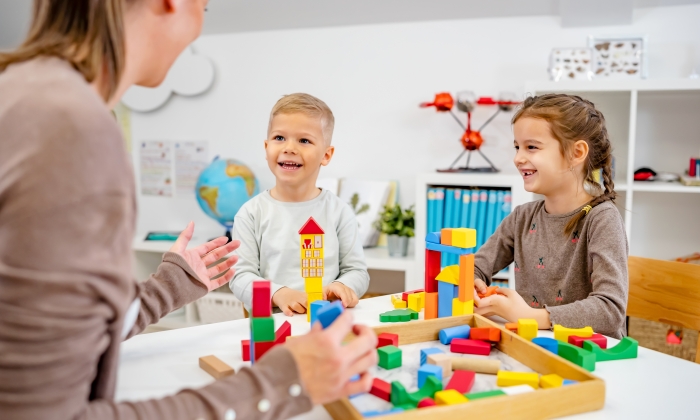
This post may contain affiliate links; please see our terms of use for details.
- Montessori activities help preschoolers develop practical life skills and make playtime educational.
- DIY Montessori activities are budget-friendly and are a fantastic addition to your daily routine.
- Your family can use the Montessori method at home to promote hands-on learning and independent thinking.
DIY projects are some of my favorites, so the idea of Montessori-inspired preschool learning activities that don’t consist of spending unnecessary money is extra appealing.
Montessori schools are popular among parents who prefer their children to learn at their own pace. Generally, Montessori teachers encourage independence, at times allowing children to struggle as they gain self-confidence.
Montessori activities are great for any age group to work on language development and fine motor skills, but they’re also fun projects to do with your kids. We’ve got you covered if you’re looking for new ideas to keep your preschooler engaged.
1. Sensory Bin
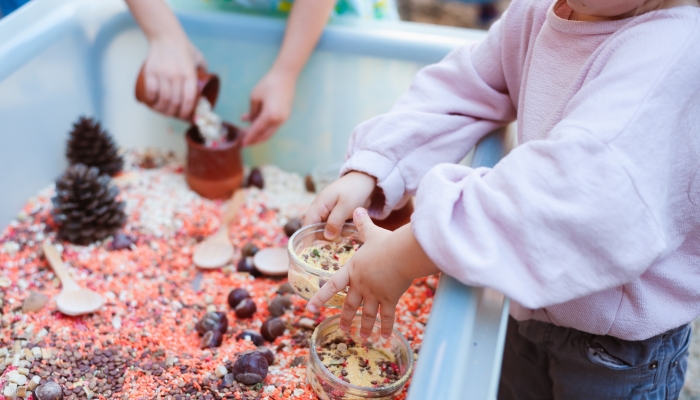
I made several DIY sensory bins when my oldest child was two to keep him engaged. While it sounds like a lot of work, it was much easier than expected. Sensory bins help kids learn at their own pace because they gradually become more comfortable with feeling different textures.
We lived near the beach, and he didn’t like touching sand, which made it hard to have fun when we went there—unlike the other children who couldn’t seem to get enough.
So, I filled one sensory bin with sand and added construction toys for him to play with. It took some time, but he loved it, which helped him become comfortable with sand at the beach.
I made another bin with rice I dyed with food coloring, and I would hide toys, so he had to dig around to find them.
Materials Needed:
- Plastic bins
- Rice or sand
- Small objects or toys
2. Emotion Stones
- 【25PCS Painting Stones】This is a set of 25 river rocks for painting, 2-3″ in size. Please pay attention to the size. Uniform size to meet your various painting needs and painted effect stones
- 【Easy to Paint】The rock for painting is easy to paint, but not easy to scratch your hands. The surface and edges is smooth and lets the acrylic paint glide nicely. Great for markers, watercolors
- 【Develop Creativity】You can use your imagination and creativity on these rocks to make each work unique and amazing. With enough creativity, ordinary stones can reflect a colorful world
- 【Handmade Gift】These flat rocks for painting are perfect for yourself or as a gift. You can surprise your mom and dad with family petroglyphs for a holiday gift. The ideal gift for your lover, little ones and friends
Emotion stones are an excellent way for children to communicate their feelings at an early age. It’s not always easy for preschoolers to put their feelings into words, so using emotion stones helps identify their feelings.
While you can buy pre-made emotion stones, making it a DIY project is easy and helps kids feel involved. You can use paint or markers and draw various faces on the stones using the following emotions:
- Happy
- Sad
- Angry
- Surprised
- Scared
- Confused
- Bored
- Embarrassed
You can then use them for a variety of activities, from matching games to acting out different emotions or even just talking about feelings.
Materials Needed:
- Markers
- Paint
- Stones (I recommend the River Rocks for Painting 25 Pcs Large 2-3 Inch Flat Smooth Painting Stones)
3. Shape Matching Game
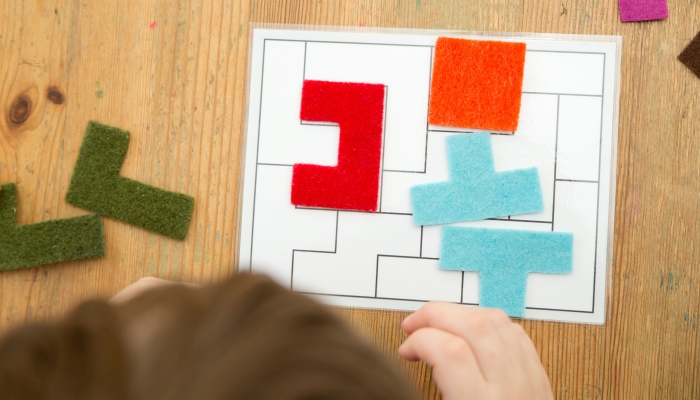
The shape-matching game is a great Montessori activity that works on developing fine motor skills in children. Preschool literacy activities like this help spark curiosity and encourage language development.
There’s no right or wrong way to approach the shape-matching game, so you may find you alter it for your child.
In addition, you’ll likely notice that toddlers need practice to understand how to match up the correct shapes, but they’ll probably still have fun in the process.
When I played the shape-matching game when my kids were toddlers, I cut out various shapes (circles, squares, hearts, etc), found objects of the same shapes, and had them match them up.
If your child knows their shapes, you can also do it with numbers where you write the number, and they have to bring you the same amount of objects and place them next to the number. For example, if you write a five, they need to get you five blocks.
Again, be creative and follow your child’s pace. When you bring the classroom home, you can alter it to appeal to the individual child.
Materials Needed:
- Cutout shapes of construction paper
- Objects of the same shape
4. Shoelace Board
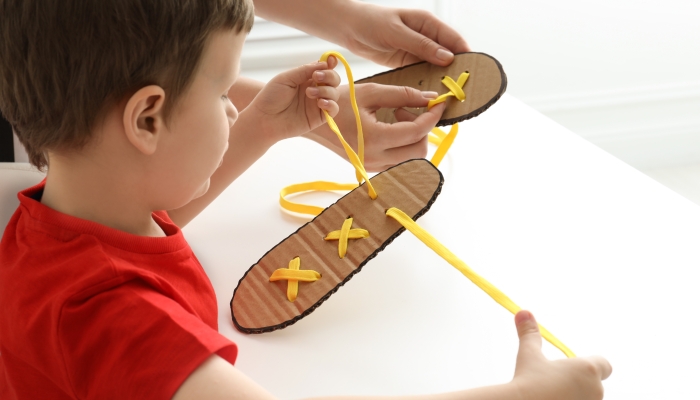
Tying shoes is a fantastic activity for working on hand-eye coordination and fine motor skills. Learning how to tie shoes was one of those life skills I struggled with teaching my kids. While it’s second nature for me, it takes a lot of practice (and possibly tears) for children.
I couldn’t be more excited when I learned about making a shoelace board. It took the stress out of tying your own shoes and made it more of a game.
To make a shoelace board, you draw a copy of a shoe on a piece of cardboard and make holes where the shoelaces go through. Your toddlers or big kids can work on tying the lace on the board without the stress of working on their own shoes while you’re trying to get out the door.
Materials Needed:
- Cardboard
- Markers
- Shoelace
5. Herb Garden
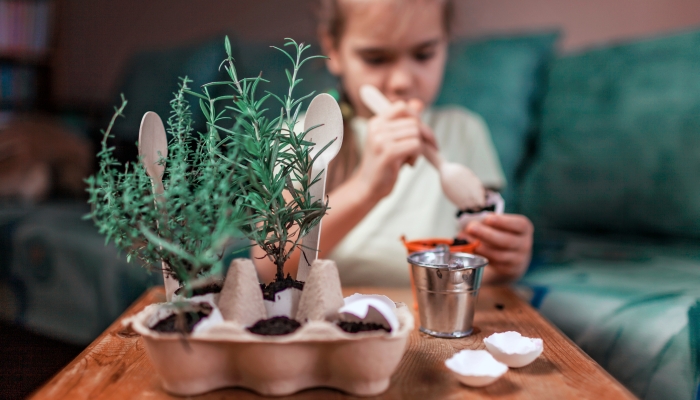
Making an herb garden is one of the easiest DIY Montessori projects you can do with preschoolers. Garden activities for kids are a great way to teach a child about science and watching plants grow.
You’ll need a biodegradable egg carton, soil, and seeds for this project. You can take this project outside since toddlers aren’t always the neatest. However, I highly recommend letting your child add the soil to the various spots in the egg carton and then add the seeds.
Your child can also work on motor skills by pouring water into each container. As the herbs grow, your child can note differences they see and get excited about the end project. You’ll also enjoy the fruits of their labor with fresh herbs!
Materials Needed:
- Seeds
- Soil
- Egg carton
- Gardening markers (optional, but they help identify the herbs)
6. Nature Collection
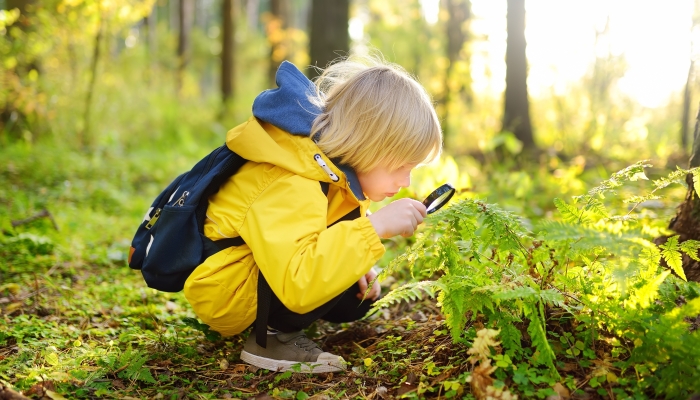
During the pandemic, we went on many nature walks to find leaves, feathers, nests, and anything else that piqued our interest. My kids thoroughly enjoyed bringing them home, and we discussed each item while asking each other questions.
They also pulled out a magnifying glass to inspect specific items closer, especially examining leaves and their intricacy. While they enjoyed finding various animals along the route, we left those be.
What I liked about creating our nature collection was it got them walking around the neighborhood and getting much-needed fresh air. As parents, it’s easy to forget that time outdoors benefits us and our kids.
Materials Needed:
- Bag or basket to collect items
- Magnifying glass
- Paper to write notes
7. Sink or Float
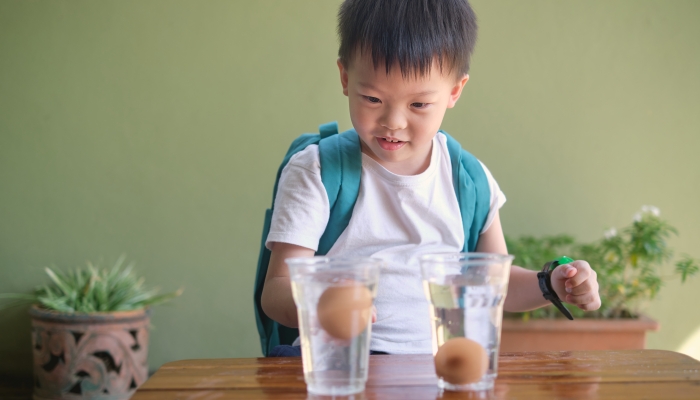
Sink or float can bring Montessori education into your home and foster an interest in science. It’s also one of the easiest Montessori activities you can do at home with your preschooler.
Engaging in science activities while teaching Montessori practical life skills is a great idea. It’s fun for preschoolers and encourages a love for learning and understanding the world around them.
For sink or float, you’ll gather various items around the house, fill a bowl or tub, and let your child determine whether they sink or float.
You can then have your child separate the items that sink or float and allow them to identify differences to determine why they reacted a specific way in the water.
Materials Needed:
- Water
- Bowl or tub
- Various items around the house
Implementing Montessori Activities at Home
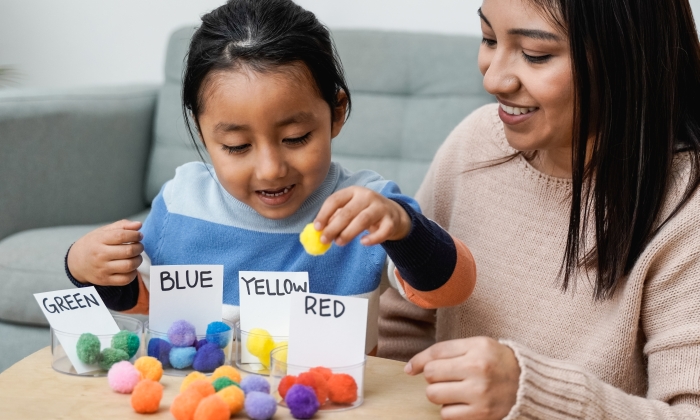
You can bring the benefits of Montessori activities into your home by taking a few steps to help your children learn. You’ll be surprised how quickly your children adapt to their new environment while engaging in Montessori parenting.
Create a Montessori-Friendly Space
Creating a Montessori-friendly space makes hands-on activities easier to access and works on building independence to explore. Here are a few tips to make your home open to Montessori practical life activities:
- Arrange low shelves and accessible materials.
- Organize activities by category and complexity.
- Make it cozy with comfortable, child-sized furniture.
- Add stuffed animals to play with.
- Include relevant age-appropriate books to enhance practical life activities.
Invite Your Child to Engage
Children learn by example, so encouraging them to explore their new space will help make them more comfortable. Sometimes, kids can be hesitant to play in an area if they think it’s inappropriate, so assuring them it’s a place for engagement will encourage them to play.
Here are a few additional tips on engaging your children in your Montessori-friendly home:
- Present activities without pressure.
- Observe and follow the child’s interests.
- Teach children to come to you with questions.
Parent’s Role in Facilitation
A parent is a child’s first teacher and one of the most significant influences in their life. (No pressure, right?) This is an excellent opportunity for us to prepare them for the real world and teach them it’s fantastic to explore the environment around them.
Consider these tips when facilitating your child’s education at home:
- Balance guidance and autonomous exploration.
- Understand when to step in and when to observe.
- Remember, preschoolers are still young and learning.
- Practice what you preach.
- Remember to encourage and have fun.
Core Principles of Montessori Education
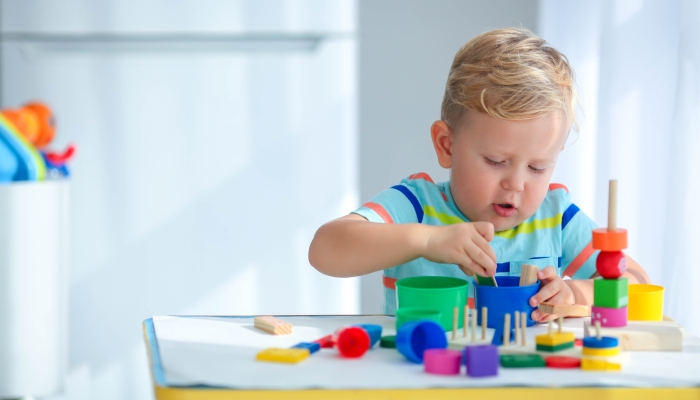
The Montessori method was developed by Dr. Maria Montessori in 1916 to provide education to low-income children in Rome11. Mead, S.. The History of the Montessori Education. Whitby School. https://www.whitbyschool.org/passionforlearning/the-history-of-the-montessori-education#:~:text=1907%3A%20The%20Founding%20Years&text=Maria%20Montessori%2C%20Italy’s%20first%20female,educational%20theories%20in%20the%20classroom.. The new concept promoted self-sufficiency, and Dr. Montessori tested the child-centered educational theories in classrooms.
Most kids succeed with the Montessori approach because the classroom is an inviting place for learning.
Child-Centered Learning
A Montessori classroom encourages self-directed learning and adapts the environment to fit the child’s needs. Many children thrive where they can determine what they do and the pace they learn. Remember, every child is different, and adapting to their needs is sometimes the best thing you can do for them.
While many people have varying views on the Montessori method, I think everyone can agree they have the child’s interests at the forefront.
Hands-On Learning
Montessori activities are excellent for hands-on learning and developing practical life skills. Many children thrive using concrete materials to learn new skills and concepts while fostering sensory and experiential learning.
In addition, the Montessori method helps:
- Promote independence
- Develop fine motor work
- Work on gross motor skills
- Acknowledge spatial awareness
Prepared Environment
Children learn well in a structured, organized space that offers freedom within limits. Dr. Montessori wanted each child to work together to accomplish their goals and create a personalized education that matched their strengths.
Prepared environments help a child know what to expect in a calm and structured learning space or classroom. The six principles of a prepared environment22. Montessori Classroom – The Prepared Environment. Kingsley Montessori School. 2022. https://www.kingsley.org/news/2022-07-01/montessori-classroom-the-prepared-environment are:
- Freedom
- Structure and Order
- Beauty
- Nature and Reality
- Social Environment
- Intellectual Environment
References
- Mead, S. (n.d.). The History of the Montessori Education. Whitby School. https://www.whitbyschool.org/passionforlearning/the-history-of-the-montessori-education#:~:text=1907%3A%20The%20Founding%20Years&text=Maria%20Montessori%2C%20Italy’s%20first%20female,educational%20theories%20in%20the%20classroom.
- Montessori Classroom – The Prepared Environment. Kingsley Montessori School. (2022, July). https://www.kingsley.org/news/2022-07-01/montessori-classroom-the-prepared-environment
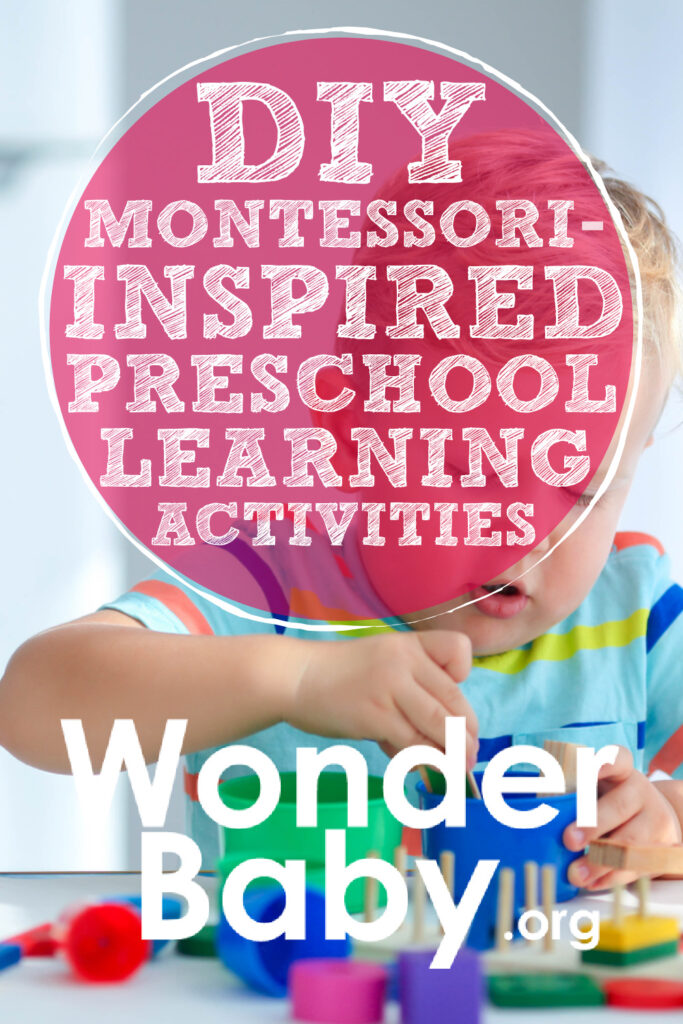
Related Posts
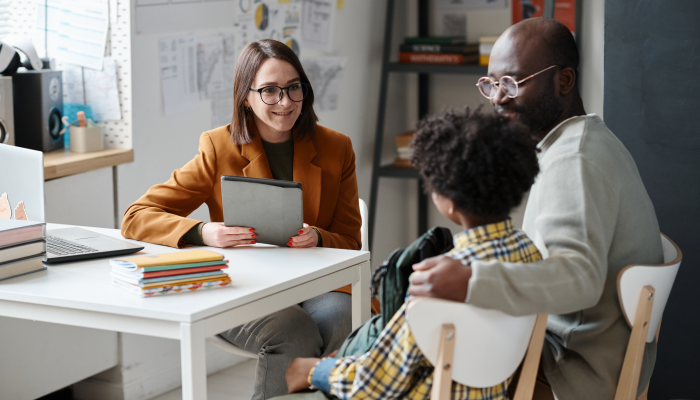
IEPs
What Should I Bring to My Child’s First IEP Meeting?
Prepare for your child's first IEP meeting with confidence! Discover exactly what documents to bring, including educational records, medical info, and questions to ask.
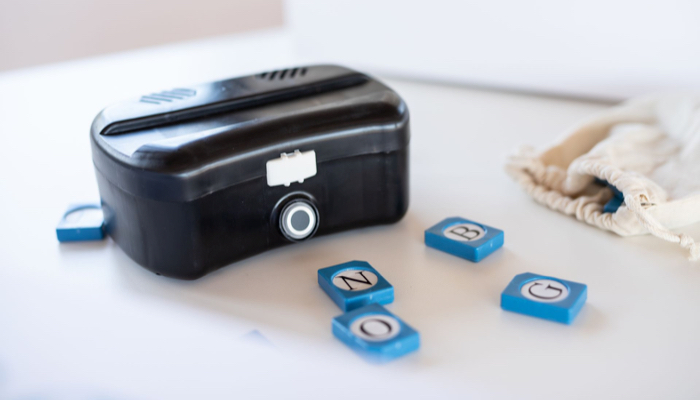
Braille and Literacy
Making Braille Fun: Introducing Handi Exceller’s Innovative Learning Tools for Blind Students
Handi Exceller was born from a simple idea: learning braille should be both fun and accessible. The company creates interactive and gamified ways to teach braille.

Braille and Literacy, Toys, Visual Impairment
24 Braille Toys for Kids Who are Blind
Everything from alphabet blocks to raised line coloring pages and activity books to puzzles to card and board games... and so much more! And it's all in braille ready for...
